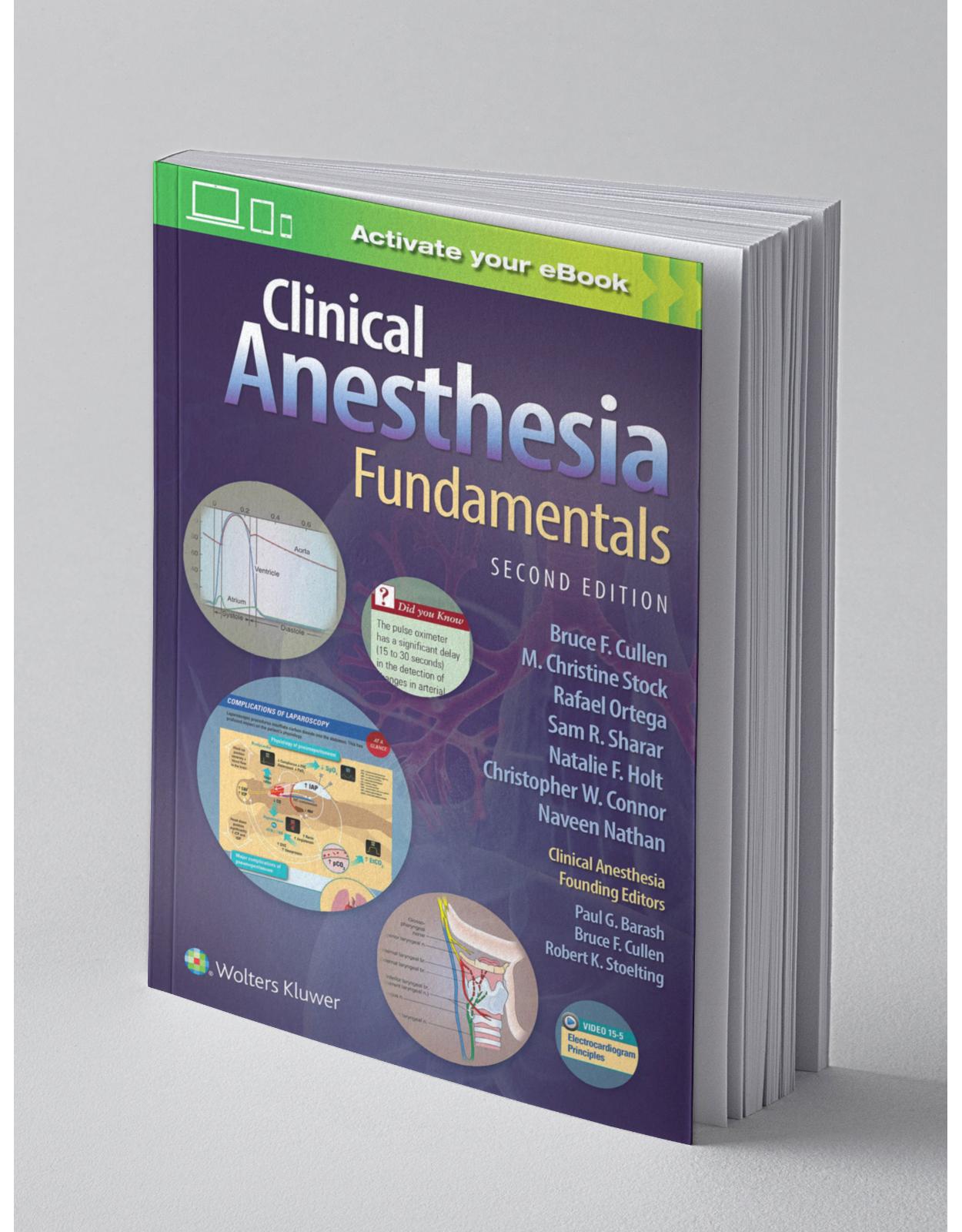
Clinical Anesthesia Fundamentals: Print + Virtual version with Multimedia
Livrare gratis la comenzi peste 500 RON. Pentru celelalte comenzi livrarea este 20 RON.
Disponibilitate: La comanda in aproximativ 4 saptamani
Editura: LWW
Limba: Engleza
Nr. pagini: 1056
Coperta: Paperback
Dimensiuni: 17.53 x 3.3 x 25.15 cm
An aparitie: 25 Oct. 2021
Description:
Part of the popular and well-regarded Clinical Anesthesia family of titles, and founded by Drs. Paul G. Barash, Bruce F. Cullen, and Robert K. Stoelting, Clinical Anesthesia Fundamentals, Second Edition, is a concise, highly visual resource covering the core concepts in anesthesiology. The editorial board comprised of Drs. Bruce F. Cullen, M. Christine Stock, Rafael Ortega, Sam R. Sharar, Natalie F. Holt, Christopher W. Connor, and Naveen Nathan, and their team of expert contributors clearly and simply present the information you need on key aspects of anesthesia for every specialty area and key organ systems. From physiology and pharmacology to anatomy and system-based anesthesia, it uses full-color graphics, easy-to-read tables, and clear, concise text to convey the essential principles of the field.
Table of Contents:
Digital Contents
SECTION I: Introduction
1. History and Future
Introduction
I. Pain and Antiquity
II. Inhaled Anesthetics
A. Nitrous Oxide
B. Diethyl Ether
C. The Ether Controversy
D. Spread of Ether
E. Chloroform
F. Critics of Anesthesia
G. The Birth of Modern Surgical Anesthesia
H. Modern Inhaled Anesthetics
III. Intravenous Anesthetics and Regional Anesthesia
A. Intravenous Anesthesia
B. Regional Anesthesia
IV. Neuromuscular-Blocking Agents
V. Anesthesiology as a Medical Specialty
VI. Modern Anesthesiology Practice
Interactive Video Lecture 1.1 History and Future
Chapter 1. Multiple Choice Question
SECTION II: Scientific and Technical Foundations of Anesthesia
PART A: Core Organ Functions: Anatomy & Physiology
2. The Respiratory System
I. Muscles of Ventilation
A. Diaphragm
B. Accessory Muscles
II. Structures of the Lung
A. Thoracic Cavity and Pleura
B. Airways
C. Vasculature
III. Breathing and Lung Mechanics
A. Spontaneous Ventilation
B. Mechanical Ventilation
C. Movement of the Lung Parenchyma
D. Elastic Resistance
E. Surface Tension
F. Compliance
G. Transpulmonary Pressure
IV. Resistance to Gas Flow
A. Laminar Flow
B. Turbulent Flow
V. Ventilation
A. Respiratory Centers
B. Chemical Ventilatory Control
VI. Oxygen and Carbon Dioxide Transport
A. Oxygen and Carbon Dioxide Transport in Lungs
B. Oxygen and Carbon Dioxide Transport in Blood
VII. Ventilation and Perfusion
A. Ventilation and Perfusion Distribution
B. Ventilation and Perfusion Relationship
VIII. Tissue Oxygenation Assessment
IX. Lung Volumes
A. Functional Residual Capacity
B. Closing Capacity
C. Vital Capacity
X. Pulmonary Function Testing
A. Forced Vital Capacity
B. Forced Expiratory Volume
C. FEV1/FVC Ratio
D. Forced Expiratory Flow
E. Maximal Voluntary Ventilation
F. Flow-Volume Loops
G. Carbon Monoxide Diffusing Capacity
XI. Preoperative Pulmonary Assessment
XII. Anesthetic Considerations in Obstructive and Restrictive Lung Disease
A. Obstructive Lung Disease
B. Restrictive Disease
XIII. Postoperative Pulmonary Function and Complications
A. Postoperative Pulmonary Function
B. Postoperative Pulmonary Complications
Infographic 2.1 A Closer Look at Positive Pressure Ventilation
Interactive Video Lecture 2.1 The Respiratory System
Interactive Video Lecture 2.2 The Respiratory System
Interactive Video Lecture 2.3 The Respiratory System
Chapter 2. Multiple Choice Question
3. Cardiovascular Anatomy and Physiology
I. Cardiac Anatomy
II. The Cardiac Cycle
III. Control of Heart Rate
IV. Coronary Physiology
V. The Pressure-Volume Diagram
VI. Factors That Determine Systolic Function
A. Left Ventricular Pump
B. Cardiac Output and Ejection Fraction
C. Heart Rate
D. Preload
E. Afterload
F. Myocardial Contractility
VII. Factors That Determine Diastolic Function
A. Heart Chambers
B. Left Ventricular Response to Load
C. Invasive Assessment of Diastolic Function
D. Noninvasive Assessment of Diastolic Function
VIII. Blood Pressure
A. Systemic, Pulmonary, and Venous
B. Vascular Resistance
C. Baroreceptor Function
IX. Venous Return
A. Vascular Compliance, Capacitance, and Control
B. Muscle Action, Intrathoracic Pressure, and Body Position
C. Blood Volume and Distribution
X. Microcirculation
A. Capillary Diffusion, Oncotic Pressure, and Starling Law
B. Precapillary and Postcapillary Sphincter Control
C. Viscosity and Rheology
Infographic 3.1 Cardiovascular Physiology At A Glance
Interactive Video Lecture 3.1 Cardiovascular Anatomy and Physiology
Interactive Video Lecture 3.2 Cardiovascular System Anatomy and Physiology
Chapter 3. Multiple Choice Question
4. Central and Autonomic Nervous System
I. The Central Nervous System
A. Cerebrospinal Fluid
B. Spinal Cord
II. The Autonomic Nervous System
A. Sympathetic Division
B. Parasympathetic Division
C. Autonomic Nervous System Transmission Process
D. Autonomic Neurotransmitters
E. Cholinergic Neurons and Receptors
Infographic 4.1 Neurophysiology At A Glance
Interactive Video Lecture 4.1 Central and Autonomic Nervous Systems
Chapter 4. Multiple Choice Question
5. The Renal System
I. Renal Anatomy and Physiology
A. Anatomy
B. Physiology: Correlation of Structure and Function
C. Glomerular Filtration Rate
D. Autoregulation of Renal Blood Flow and Glomerular Filtration
E. Tubular Reabsorption of Sodium and Water
F. The Renin-Angiotensin-Aldosterone System
G. Renal Vasodilator Response
II. Clinical Assessment of the Kidney
A. Glomerular Filtration Rate
B. Serum Creatinine and Creatinine Clearance
C. Urinalysis and Urine Characteristics
D. Novel Markers of Kidney Injury
III. Acute Kidney Injury
IV. Chronic Kidney Disease
A. Drug Prescribing in Renal Failure
B. Anesthetic Drugs in CKD
C. Management of Anesthesia for Patients With Renal Disease
V. Diuretic Drugs: Effects and Mechanisms
A. The Physiologic Basis of Diuretic Action
Infographic 5.1 A Closer Look At Renal Protection
Interactive Video Lecture 5.1 Renal System
Chapter 5. Multiple Choice Question
6. Liver Anatomy and Physiology
I. Gross Anatomy
II. Microscopic Anatomy
III. Hepatic Blood Supply
A. Hepatic Autonomic System
B. Lymphatic System
IV. Hepatic Metabolic, Synthetic, and Excretory Functions
V. Assessment of Hepatic Function
VI. Metabolism and Drug Disposition
Infographic 6.1 A Closer Look At Hepatic Blood Flow and Clearance
Interactive Video Lecture 6.1 Liver Anatomy and Physiology
Chapter 6. Multiple Choice Question
PART B: Pharmacology
7. Principles of Pharmacokinetics and Pharmacodynamics
I. Principles of Pharmacokinetics
A. Drug Absorption and Routes of Drug Administration
B. Drug Distribution, Elimination, and Biotransformation
C. Pharmacokinetic Concepts
D. Mathematical Concepts in Pharmacokinetics
E. Physiologic Versus Compartmental Models
F. Multicompartmental Models
II. Principles of Pharmacodynamics
A. Modeling From Concentration to Effect
B. Dose-Response Relationships
C. Therapeutic Thresholds and Therapeutic Windows
III. Anesthetic Drug Interactions
A. Pharmacokinetic Interactions
B. Pharmacodynamic Interactions
C. Unintended Toxicity
Infographic 7.1. Pharmacokinetics At a Glance
Interactive Video Lecture 7.1 Pharmacokinetics and Pharmacodynamics
Chapter 7. Multiple Choice Question
8. Inhaled Anesthetics
I. Pharmacologic Principles
A. Terminology
B. Classification of Inhaled Anesthetics
C. Physical Characteristics of Inhaled Anesthetics
II. Uptake and Distribution of Inhaled Anesthetic Agents
A. Alveolar/Inspired Anesthetic Concentration
B. Concentration Effect and Overpressurization
C. Second Gas Effect
D. Distribution
E. Metabolism
III. Neuropharmacology of Inhaled Anesthetics
IV. Cardiovascular Effects
V. Respiratory Effects
VI. Effects on Other Organ Systems
VII. Potential Toxicity of Inhaled Anesthetics
VIII. The Nonvolatile Anesthetics
A. Nitrous Oxide
B. Xenon
IX. Clinical Use of Inhaled Anesthetics
Infographic 8.1 Inhaled Anesthetics At a Glance
Interactive Video Lecture 8.1 Inhalational Anesthetic Agents
Chapter 8. Multiple Choice Question
9. Intravenous Anesthetics and Sedatives
I. General Pharmacology of IV Anesthetics
A. Mechanism of Action
B. Pharmacokinetics and Metabolism
C. Pharmacodynamic Effects
D. Hypersensitivity (Allergic) Reactions
II. Comparative Physiochemical and Clinical Pharmacologic Properties
A. Barbiturates
B. Propofol
C. Benzodiazepines
D. Etomidate
E. Ketamine
F. Dexmedetomidine
III. Clinical Use of IV Anesthetics
A. Use of IV Anesthetics as Induction Agents
B. Use of IV Drugs for Maintenance of Anesthesia
C. Use of IV Anesthetics for Sedation
Infographic 9.1 A Closer Look at Propofol
Interactive Video Lecture 9.1 Intravenous Anesthetics and Sedatives
Chapter 9. Multiple Choice Question
10. Analgesics
I. Brief History and Overview
II. Nonopioid Analgesics
A. Acetaminophen
B. Acetylsalicylic Acid
C. Other NSAIDs
D. N-Methyl-D-Aspartate Receptor Antagonists
E. α2-Adrenergic Receptor Agonists: Clonidine and Dexmedetomidine
III. Novel Nonopioid Analgesics and Future Directions
A. Cannabinoids
B. Esmolol
C. Antidepressants
D. Anticonvulsants
IV. Opioid Analgesics
A. Endogenous Opioids
B. Opioid Receptors
C. Mechanism of Opioid Analgesia
D. Opioid-Induced Hyperalgesia, Tolerance, and Dependence
E. Routes of Administration
F. Pharmacokinetics and Pharmacodynamics
G. Therapeutic Effects
H. Adverse Effects
I. Metabolism and Active Metabolites
J. Drug Interactions
K. Pharmacogenetics and Special Populations
L. Indications, Doses, and Special Considerations
M. Reversal Agents and Associated Effects
Infographic 10.1 Perioperative Multimodal Analgesia At a Glance
Interactive Video Lecture 10.1 Analgesics
Interactive Video Lecture 10.2 Analgesics
Chapter 10. Multiple Choice Question
11. Neuromuscular Blocking Agents
I. History and Introduction
A. Morphology of the Neuromuscular Junction
B. Presynaptic Events: Mobilization and Release of Acetylcholine
C. Postsynaptic Events
D. Receptor Up- and Downregulation
II. Neuromuscular Blocking Agents
A. Pharmacologic Characteristics of Neuromuscular Blocking Agents
III. Depolarizing Neuromuscular Blocking Drugs: Succinylcholine
A. Neuromuscular Effects
B. Characteristics of Depolarizing Blockade
C. Pharmacology of Succinylcholine
D. Side Effects
E. Clinical Uses
F. Contraindications to Use of Succinylcholine
IV. Nondepolarizing Neuromuscular Blocking Agents
A. Characteristics of Nondepolarizing Blockade
B. Pharmacology of Nondepolarizing Neuromuscular Blocking Drugs
C. Onset and Duration of Action
D. Nondepolarizing Agents
V. Drug Interactions
A. Additive and Synergistic Effects
B. Antagonism
C. Potentiation
VI. Altered Responses to Neuromuscular Blocking Agents
VII. Monitoring Neuromuscular Blockade
A. Subjective Evaluation and Quantitative Monitoring
B. Monitoring Modalities
C. Quantitative Monitoring
D. Differential Muscle Sensitivity
E. Clinical Applications
VIII. Reversal of Neuromuscular Blockade
A. Residual Neuromuscular Blockade
B. Anticholinesterase Agents
C. Factors Affecting Neostigmine Reversal
D. Neostigmine: Other Effects
E. Selective Relaxant Binding Agents: Sugammadex
IX. Conclusion
Infographic 11.1 A Closer Look at Sugammadex
Interactive Video Lecture 11.1 Neuromuscular Blocking Agents
Chapter 11. Multiple Choice Question
12. Local Anesthetics
Introduction
I. Mechanism of Action of Local Anesthetics
A. Anatomy of Nerves
B. Electrophysiology of Neural Conduction and Voltage-Gated Sodium Channels
C. Voltage-Gated Sodium Channels and Interactions With Local Anesthetics
D. Mechanisms of Nerve Block
II. Local Anesthetic Pharmacodynamics
A. Physiochemical Properties and Relationship to Activity and Potency
B. Additives to Augment Local Anesthetic Activity
III. Local Anesthetic Pharmacokinetics
A. Systemic Absorption
B. Distribution
C. Elimination
D. Clinical Pharmacokinetics
IV. Toxicity of Local Anesthetics
A. Central Nervous System Toxicity
B. Cardiovascular System Toxicity
C. Treatment of Local Anesthetic Systemic Toxicity
D. Neural Toxicity and Myotoxicity
E. Allergic Reactions
V. Local Anesthetic Agents and Their Common Clinical Applications
A. Aminoamide Local Anesthetics
B. Aminoester Local Anesthetics
Infographic 12.1 Local Anesthetic Toxicity At a Glance
Interactive Video Lecture 12.1 Local Anesthetics
Chapter 12. Multiple Choice Question
13. Cardiovascular Pharmacology
I. Catecholamines
A. Epinephrine
B. Norepinephrine
C. Dopamine
D. Dobutamine
E. Isoproterenol
II. Sympathomimetics
A. Ephedrine
B. Phenylephrine
III. Milrinone
IV. Levosimendan
V. Vasopressin
VI. Antihypertensive Medications
A. β-Blockers
B. Nitrovasodilators
C. Hydralazine
D. Calcium Channel Antagonists
Interactive Video Lecture 13.1 Cardiovascular Pharmacology
Interactive Video Lecture 13.2 Cardiovascular Pharmacology
Interactive Video Lecture 13.3 Cardiovascular Pharmacology
Chapter 13. Multiple Choice Question
PART C: Technology
14. The Anesthesia Workstation
I. Functional Anatomy of the Anesthesia Workstation
II. Delivery of Gases: High-, Intermediate-, and Low-Pressure Systems
A. Flowmeters
B. Flush Actuator and One-Way Check Valve
C. Safeguards in the Delivery of Medical Gases
D. Anesthetic Vaporizers
E. Desflurane and the Tec 6 Vaporizer
III. Anesthesia Breathing Systems
A. Impact of Fresh Gas Flow
B. Unidirectional Valves
C. Adjustable Pressure-Limiting Valve
D. The Breathing Bag
E. Carbon Dioxide Absorbents
F. End-Tidal Gas Monitoring, Oxygen Analyzer, and Spirometry
G. Mechanical Ventilators
H. Modern Anesthesia Machines
IV. Scavenging Systems
V. Anesthesia Workstation Preuse Checkout
Infographic 14.1 A Closer Look at ASA Preanesthesia Checkout
Interactive Video Lecture 14.1 The Anesthesia Workstation
Interactive Video Lecture 14.2 The Anesthesia Workstation
Chapter 14. Multiple Choice Question
15. Standard Anesthesia Monitoring Techniques and Instruments
I. Basic Anesthesia Monitoring
A. Oxygenation
B. Ventilation
C. Circulation
D. Temperature
II. Common Additional Monitors
A. Urine Output
B. Neuromuscular Blockade
C. Neurologic Monitoring
III. Advanced Hemodynamic Monitors
A. Invasive Monitoring of Systemic Blood Pressure
B. Central Venous Pressure Monitoring
C. Pulmonary Artery Catheter
D. Noninvasive Cardiac Output and Volume Assessment
E. Transesophageal Echocardiography
Infographic 15.1 A Closer Look at Blood Pressure Monitoring
Interactive Video Lecture 15.1 Standard Anesthesia Monitoring Techniques and Instruments
Chapter 15. Multiple Choice Question
SECTION III: Clinical Practice of Anesthesia
16. Preoperative Evaluation and Management
I. Approach to the Patient
A. Planned Surgery and Its Indication
B. Present and Past Medical History
C. Current Medications and Drug Allergies
D. Social History
E. Response to Prior Anesthetics
F. Focused Physical Examination
II. Evaluation of the Patient With Known Systemic Disease
A. Cardiovascular Disease
B. Pulmonary Disease
C. Endocrine Disease
III. Perioperative Laboratory Testing
IV. Preparation for Anesthesia
A. Fasting Guidelines
B. Pharmacologic Agents to Reduce the Risk of Pulmonary Aspiration
V. Preoperative Medication
A. Benzodiazepines
B. Antihistamines
C. Antisialagogues
D. Antiemetics
E. Preemptive Analgesia
IV. Antibiotic Prophylaxis
A. Surgical Prehabilitation
Infographic 16.1 A Closer Look at Preoperative Cardiac Ultrasound
Interactive Video Lecture 16.1 Preoperative Evaluation and Management
Interactive Video Lecture 16.2 Preoperative Evaluation and Management
Chapter 16. Multiple Choice Question
17. Coexisting Diseases Impacting Anesthetic Management
I. Duchenne Muscular Dystrophy
A. Management of Anesthesia
II. The Myotonias
A. Management of Anesthesia
III. Familial Periodic Paralysis
A. Hyperkalemic Periodic Paralysis
B. Hypokalemic Periodic Paralysis
C. Management of Anesthesia
IV. Myasthenia Gravis
A. Myasthenic Syndrome (Lambert-Eaton Syndrome)
V. Guillain-Barre Syndrome (Polyradiculoneuritis)
A. Management of Anesthesia
VI. Central Nervous System Diseases
A. Multiple Sclerosis
B. Epilepsy
C. Alzheimer Disease
D. Parkinson Disease
VII. Inherited Disorders
A. Malignant Hyperthermia
B. Porphyria
C. Cholinesterase Disorders
D. Glycogen Storage Diseases
E. Osteogenesis Imperfecta
VIII. Anemias
A. Nutritional Deficiency Anemias
B. Hemolytic Anemias
C. Glucose-6-Phosphate Dehydrogenase Deficiency
D. Hemoglobinopathies
IX. Collagen Vascular Diseases
A. Rheumatoid Arthritis
B. Systemic Lupus Erythematosus
C. Systemic Sclerosis
D. Inflammatory Myopathies
X. Skin Disorders
A. Epidermolysis Bullosa
B. Pemphigus Vulgaris
Infographic 17.1 A Closer Look at Malignant Hyperthermia
Interactive Video Lecture 17.1 Coexisting Diseases Impacting Anesthetic Management
Interactive Video Lecture 17.2 Coexisting Diseases Impacting Anesthetic Management
Chapter 17. Multiple Choice Question
18. Endocrine Function
I. Integrated Physiology
II. Hypothalamus-Pituitary Complex
A. Anterior Pituitary
B. Posterior Pituitary
III. Thyroid Gland
A. Thyroid Hormone Metabolism
B. Physiologic Effects of Thyroid Hormone
C. Tests of Thyroid Function
D. Hyperthyroidism
E. Hypothyroidism
F. Anesthetic Priorities in Thyroid Surgery
IV. Adrenal Gland
A. Adrenal Cortex
B. Adrenal Medulla
V. Calcium Homeostasis
A. Hyperparathyroidism
B. Hypoparathyroidism
C. Anesthetic Implications of Parathyroid Surgery
VI. Diabetes Mellitus
A. Physiology
B. Classification
C. Diagnosis
D. Treatment
E. Anesthetic Management
F. Diabetic Emergencies
VII. Endocrine Response to Surgery
Interactive Video Lecture 18.1 Endocrine Function
Chapter 18. Multiple Choice Question
19. General Anesthesia
I. Purpose/Goals of an Anesthetic
A. What Is Anesthesia?
B. Who Gives Anesthesia?
C. What Are the Risks of Anesthesia?
II. Preoperative Evaluation
A. Patient Assessment
B. Anesthetic Plan
C. Nil Per Os Status
D. Informed Consent
E. Premedication
III. Intraoperative Management
A. Monitoring
B. Time Out
C. Induction
D. Airway
E. The Anesthesia Record
F. Maintenance
G. Fluid Management
H. Temperature
I. Emergence
IV. Postoperative Care
V. Summary
Interactive Video Lecture 19.1 General Anesthesia
Chapter 19. Multiple Choice Question
20. Airway Management
I. Airway Anatomy
II. Patient History and Physical Examination
III. Clinical Management of the Airway
A. Preoxygenation
B. Facemask Ventilation
C. Patient Positioning
D. Difficult Mask Ventilation
E. Supraglottic Airways
F. Tracheal Intubation
G. Control of Gastric Contents
H. Intubating SGAs
I. Extubation of the Trachea
J. The Difficult Airway Algorithm
K. Awake Airway Management
L. The Flexible Intubation Scope in Airway Management
M. The SGAs in the Failed Airway
N. Transtracheal Procedures
Infographic 20.1 Airway Management At a Glance
Interactive Video Lecture 20.1 Airway Management
Chapter 20. Multiple Choice Question
21. Regional Anesthesia
I. General Principles and Equipment
A. Setup and Monitoring
B. Peripheral Nerve Stimulators
C. Ultrasound Guidance
D. Other Related Equipment
II. Avoiding Complications
III. Specific Techniques for the Head, Neck, Upper Extremities, and Trunk
A. Head and Neck
B. Supraorbital and Supratrochlear Nerve Blocks
C. Brachial Plexus Blockade
D. Terminal Upper Extremity Nerve Blocks
E. Intravenous Regional Anesthesia
F. Intercostal Nerve Blocks
G. Paravertebral Nerve Blocks
H. Erector Spinae Plane Block
I. Transversus Abdominis Plane Block
J. Inguin al Nerve Block
IV. Anatomic Considerations for Lower Extremity Blockade
A. Lumbar Plexus
B. Sacral Plexus
V. Specific Techniques for the Lower Extremities
A. Psoas Compartment Block
B. Femoral Nerve Block
C. Saphenous Nerve Block
D. Sciatic Nerve Block
E. Ankle Block
Infographic 21.1 A Closer Look at Intravenous Regional Anesthesia
Interactive Video Lecture 21.1 Regional Anesthesia
Interactive Video Lecture 21.2 Regional Anesthesia
Chapter 21. Multiple Choice Question
22. Patient Positioning and Potential Injuries
I. Anesthesia and Sedation: So Different Than Regular Sleep
II. Mechanisms of Soft Tissue Injury
A. Stretch
B. Compression
III. Common Perioperative Neuropathies
A. Upper Extremity Neuropathies
B. Lower Extremity Neuropathies
IV. Practical Considerations to Prevent Perioperative Peripheral Neuropathies
V. Unique Positioning Problems With Catastrophic Results
A. Spinal Cord Ischemia With Hyperlordosis
B. Thoracic Outlet Obstruction
C. Steep Head-Down Positions
D. Steep Head-Up Positions
E. Soft Tissue Problems
VI. Summary
Infographic 22.1 Perioperative Nerve Injuries At a Glance
Interactive Video Lecture 22.1 Patient Positioning and Potential Injuries
Chapter 22. Multiple Choice Question
23. Fluids and Electrolytes
I. Acid-Base Interpretation and Treatment
A. Overview of Acid-Base Equilibrium
B. Metabolic Acidosis
C. Metabolic Alkalosis
D. Respiratory Acidosis
E. Respiratory Alkalosis
F. Physiologic Compensation of Acid-Base Disorders
II. Practical Approach to Acid-Base Interpretation
III. Physiology of Fluid Management
A. Body Fluid Compartments
B. Regulation of Extracellular Fluid Volume
C. Distribution of Infused Fluids
IV. Fluid Replacement Therapy
A. Maintenance Requirements for Water, Sodium, and Potassium
B. Glucose Requirements and Dextrose
C. Surgical Fluid Requirements
V. Colloids, Crystalloid, and Hypertonic Solutions
A. Physiology and Pharmacology
B. Clinical Implications of Choosing Crystalloid or Colloid
C. Implications of Crystalloid and Colloid Solutions on Intracranial Pressure
D. Implications of Isotonic Fluid Choice
E. Clinical Implications of Hypertonic Fluid Administration
VI. Fluid Status: Assessment and Monitoring
A. Conventional Clinical Assessment
B. Intraoperative Clinical Assessment
C. Oxygen Delivery as a Goal of Management
VII. Electrolytes
A. Physiologic Role of Electrolytes
B. Sodium
C. Potassium
D. Calcium
E. Magnesium
Infographic 23.1 A Closer Look at Metabolic Acidosis
Interactive Video Lecture 23.1 Fluids and Electrolytes
Interactive Video Lecture 23.2 Fluids and Electrolytes
Chapter 23. Multiple Choice Question
24. Blood Therapy
I. Blood-Product Transfusion
A. Component Therapy and Indications for Transfusion
II. Blood Compatibility
III. Blood Administration
IV. Transfusion Reactions
V. Perioperative Alternatives to Transfusion
VI. Primary Hemostasis
A. Secondary Hemostasis
B. Fibrinolysis
C. Regulation of Hemostasis
VII. Pharmacology
Infographic 24.1 Blood Therapy At a Glance
Interactive Video Lecture 24.1 Blood Therapy
Interactive Video Lecture 24.2 Blood Therapy
Chapter 24. Multiple Choice Question
25. Ambulatory Anesthesia, Monitored Anesthesia Care, and Office-Based Anesthesia
I. Monitored Anesthesia Care
A. Terminology
B. Preoperative Assessment
C. Techniques of MAC
D. Specific Drugs Used During MAC
E. Patient-Controlled Analgesia and Sedation
F. Respiratory Function and Sedative-Hypnotics
G. Monitoring During MAC
H. Sedation and Analgesia by Nonanesthesiologists
II. Ambulatory Anesthesia
A. Patient and Procedure Selection
B. Preoperative Evaluation
C. Managing the Anesthetic: Premedication
D. Intraoperative Management: Choice of Anesthetic Method
E. Postanesthesia Care
III. Office-Based Anesthesia
A. Patient Selection and Preoperative Management
B. Equipment and Monitoring
C. Safety and Organization
D. Anesthetic Management
IV. Conclusion
Infographic 25.1 A Closer Look at Postoperative Nausea and Vomiting
Interactive Video Lecture 25.1 Ambulatory Anesthesia, Monitored Anesthesia Care, and Office-Based Anesthesia
Chapter 25. Multiple Choice Question
26. Orthopedic Anesthesia
I. Preoperative Assessment
II. Enhanced Recovery Pathways
III. Spine and Spinal Cord Pathology
A. Spinal Cord Injuries
B. Scoliosis
C. Degenerative Vertebral Column Disease
D. Anesthesia for Spine Surgery
E. Spinal Cord Monitoring
F. Blood Transfusion Strategies
G. Visual Loss After Spine Surgery
H. Venous Air Embolism
I. Postoperative Care
J. Neuraxial and Regional Anesthesia for Spine Surgery
IV. Anesthesia for Extremity Surgery
A. Choice of Anesthetic Technique
V. Surgery to the Upper Extremities
A. Surgery to the Shoulder and Upper Arm
B. Surgery to the Elbow
C. Surgery to the Wrist and Hand
VI. Surgery to the Lower Extremities
A. Surgery to the Hip
B. Surgery to the Knee
C. Surgery to the Ankle and Foot
VII. Postoperative Regional and Multimodal Analgesia
VIII. Pediatric Orthopedic Surgery
IX. Other Considerations and Complications
A. Tourniquet Management
B. Fat Embolus Syndrome
C. Methyl Methacrylate
D. Venous Thromboembolism and Antithrombotic Prophylaxis
Infographic 26.1 A Closer Look at Regional Anesthesia and Anticoagulation
Interactive Video Lecture 26.1 Spine and Orthopedic Anesthesia
Interactive Video Lecture 26.2 Spine and Orthopedic Anesthesia
Chapter 26. Multiple Choice Question
27. Anesthesia for Laparoscopic and Robotic Surgeries
I. Surgical Techniques
II. Physiologic Effects
A. Systemic Cardiovascular Effects
B. Regional Perfusion
C. Respiratory Effects
III. Anesthetic Management
A. Patient Selection
B. Induction of Anesthesia and Airway Management
C. Maintenance of Anesthesia
IV. Pain Prevention
V. Intraoperative Complications
A. Cardiopulmonary Complications
B. Surgical Complications
C. Hypothermia
D. Complications Related to Positioning
VI. Postoperative Considerations
VII. Ambulatory Laparoscopic Procedures
VIII. Summary
Infographic 27.1 Complications of Laparoscopy At a Glance
Interactive Video Lecture 27.1 Anesthesia for Laparoscopic and Robotic Surgeries
Chapter 27. Multiple Choice Question
28. Anesthetic Considerations for Patients With Obesity, Hepatic Disease, and Other Gastrointestinal Issues
I. Obesity
A. Pathophysiology
B. Pharmacologic Principles
C. Preoperative Evaluation
D. Preoperative Planning and Type of Anesthetic
E. Intraoperative Considerations
F. Anesthesia for Bariatric Surgery
G. Postoperative Management, Critical Care, and Resuscitation
II. Hepatic Disease
A. Assessment of Hepatic Function
B. Hepatic and Hepatobiliary Diseases
C. Cirrhosis and Portal Hypertension
D. Preoperative Evaluation
E. Intraoperative Management
F. Specific Procedures
G. Hepatic Transplantation
III. Anesthetic Management for Gastrointestinal Surgery
A. Pharmacology
B. Pulmonary Function
C. Mechanical Obstruction and Paralytic Ileus
D. Bowel Perforation and Peritonitis
Infographic 28.1 A Closer Look at Liver Disease and Hemostasis
Interactive Video Lecture 28.1 Anesthetic Considerations for Obesity
Interactive Video Lecture 28.2 Anesthetic Considerations in Hepatic Disease, and Other Gastrointestinal Issues
Chapter 28. Multiple Choice Question
29. Anesthesia for Otolaryngologic and Ophthalmic Surgery
ANESTHESIA FOR OTOLARYNGOLOGIC SURGERY
I. General Considerations
II. Anesthetic Considerations in the Pediatric Population
A. Anatomy and Physiology
B. Myringotomy and Tube Insertion
C. Tonsillectomy and Adenoidectomy
D. Posttonsillectomy Hemorrhage
E. Emergencies/Stridor
III. Anesthesia for Adult Otolaryngologic Surgery
A. Middle Ear and Mastoid
B. Nasal and Sinus Surgery
C. Maxillofacial Trauma and Orthognathic Surgery
D. Craniofacial Bone Structure
E. Temporomandibular Joint Arthroscopy
F. Surgery of the Airway
G. Infection
H. Neck Dissections and Free Flaps
IV. Extubation
ANESTHESIA FOR OPHTHALMIC SURGERY
I. Ocular Anatomy
II. Ocular Physiology
A. Formation and Drainage of Aqueous Humor
B. Maintenance of IOP
C. Oculocardiac Reflex
III. Glaucoma
IV. Anesthetic Implications of Ophthalmic Drugs
A. Anticholinesterase Agents
B. Cyclopentolate
C. Epinephrine
D. Phenylephrine
E. Topical Beta Blockers
F. Intraocular Sulfur Hexafluoride
G. Systemic Drugs
V. Preoperative Evaluation
VI. Anesthetic Techniques
A. Retrobulbar, Peribulbar, and Sub-Tenon Blocks
B. Topical Anesthesia
C. Choice of Local Anesthetic, Block Adjuvants, and Adjuncts
D. Monitored Anesthesia Care
E. General Anesthesia for Ophthalmic Surgery
VII. Anesthetic Management of Specific Situations
A. Open Eye-Full Stomach
B. Strabismus Surgery
C. Intraocular Surgery
D. Retinal Detachment Surgery
VIII. Perioperative Ocular Complications
A. Corneal Abrasion
B. Perioperative Visual Loss
Infographic 29.1 A Closer Look at Intraocular Pressure and Anesthesia
Interactive Video Lecture 29.1 Anesthesia for Otolaryngologic Surgery
Interactive Video Lecture 29.2 Anesthesia for Ophthalmic Surgery
Chapter 29. Multiple Choice Question
30. Anesthesia for Neurosurgery
I. Neuroanatomy
II. Neurophysiology
III. Pathophysiology
IV. Monitoring
A. CNS Function
B. Influence of Anesthetic Technique
V. Cerebral Perfusion
A. Processed EEG Monitoring
B. Transcranial Doppler Ultrasonography
C. ICP Monitoring
D. Cerebral Oxygenation and Metabolism Monitors
VI. Cerebral Protection
A. Ischemic and Reperfusion
B. Hypothermia
C. Medical Therapy for Cerebral Protection
D. Glucose and Cerebral Ischemia
E. A Practical Approach
VII. Anesthetic Management
A. Preoperative Evaluation
B. Induction of Anesthesia and Airway Management
C. Maintenance of Anesthesia
D. Ventilation Management
E. Fluids and Electrolytes
F. Transfusion Therapy
G. Glucose Management
H. Emergence
VIII. Common Surgical Procedures
A. Surgery for Tumors
B. Pituitary Surgery
C. Cerebral Aneurysm Surgery and Endovascular Treatment
D. Arteriovenous Malformations
E. Carotid Surgery
F. Epilepsy Surgery and Awake Craniotomy
G. Endovascular Therapy for Acute Ischemic Stroke
IX. Anesthesia and Traumatic Brain Injury
A. Overview of Traumatic Brain Injury
B. Anesthetic Management
X. Anesthesia for Spine Trauma and Complex Spine Surgery
A. Spinal Cord Injury
B. Comorbid Injuries
C. Initial Management
D. Intraoperative Management
E. Complications of Anesthesia for Spine Surgery
Interactive Video Lecture 30.1 Anesthesia for Neurosurgery
Interactive Video Lecture 30.2 Anesthesia for Neurosurgery
Interactive Video Lecture 30.3 Anesthesia for Neurosurgery
Chapter 30. Multiple Choice Question
31. Obstetrical Anesthesia
I. Physiologic Changes of Pregnancy
A. Hematologic Changes
B. Cardiovascular Changes
C. Respiratory Changes
D. Airway Changes
E. Gastrointestinal Changes
F. Neurologic and Musculoskeletal Changes
G. Endocrine Changes
H. Renal and Hepatic Changes
II. Uteroplacental and Fetal Circulation
III. Pain Pathways in Labor, Anatomy of the Spine, and Neuraxial Analgesia and Anesthesia
IV. Anesthesia for Cesarean Delivery
A. Postoperative Analgesia
V. Fetal Assessment and Neonatal Resuscitation
A. Intrauterine Resuscitation
B. Ancillary Fetal Testing
VI. Comorbidities and Obstetric Diseases
A. Pregnancy-Induced Hypertensive Disorders
B. Diabetes Mellitus
C. Obesity
D. Fever and Infection
E. Epidural Fever
F. Bleeding Disorders
VII. Emergencies
A. Cardiopulmonary Arrest
B. Maternal Mortality
VIII. Complications of Neuraxial Anesthesia
A. Postdural Puncture Headache or Epidural Blood Patch
B. Local Anesthetic Overdose
C. Nerve Damage
D. Neuraxial Hematoma or Abscess
IX. Anesthesia for Nonobstetric Surgery During Pregnancy
Infographic 31.1 Neuraxial Anesthesia for Cesarean Section At a Glance
Interactive Video Lecture 31.1 Obstetric Anesthesia
Interactive Video Lecture 31.2 Obstetric Anesthesia
Interactive Video Lecture 31.3 Obstetric Anesthesia
Chapter 31. Multiple Choice Question
32. Trauma and Burn Anesthesia
I. Initial Trauma Evaluation and Resuscitation
A. Airway Management With Restriction of Cervical Spine Motion
B. Breathing/Ventilation
C. Circulation and Hemorrhage Control
D. Disability (Neurologic Evaluation and Management)
E. Exposure and Environment Control
F. Interdisciplinary, Team-Based Management
II. Operative Management: General Considerations
A. Monitoring
B. Anesthetic and Adjunct Drugs
C. Induction and Airway Management
D. Hypotension
E. Hypothermia
F. Coagulation Abnormalities
G. Electrolyte and Acid-Base Disturbances
III. Anesthetic Management of Specific Injuries
A. Traumatic Brain Injuries or Head Injury
B. Spine and Spinal Cord Injury
C. Soft Tissue Neck Injury
D. Chest Injury
E. Abdominal and Pelvic Injuries
F. Extremity Injuries
G. Open Globe Injuries
IV. Burn Injuries
A. Initial Evaluation and Management of Burn Injuries
B. Burn Severity Estimation
C. Inhalation Injury
D. Fluid Resuscitation
E. Perioperative Management of Burn-Injured Patients
V. Disaster Preparedness
A. Mass Casualties
B. Biologic, Chemical, and Nuclear Warfare
Interactive Video Lecture 32.1 Trauma and Burn Anesthesia
Interactive Video Lecture 32.2 Trauma and Burn Anesthesia
Chapter 32. Multiple Choice Question
33. Neonatal and Pediatric Anesthesia
I. Physiology
A. Cardiovascular System
B. Pulmonary System
C. Renal System
D. Hepatic System
E. Central Nervous System
II. Pharmacology
III. Equipment
IV. Perioperative Management
A. Preoperative Assessment
B. Fasting Guidelines
C. Preoperative Anxiolysis
D. Induction of Anesthesia
E. Pediatric Airway Management
V. Temperature Management
VI. Fluid and Blood Management
A. Intravenous Fluid Requirements
B. Blood Loss Replacement and Transfusion
C. Regional Anesthesia
VII. Surgical Procedure Considerations
A. Myelomeningocele
B. Ventriculoperitoneal Shunts
C. Craniofacial Surgery
D. Tonsillectomy
E. Cleft Lip and Palate
F. Diaphragmatic Hernia
G. Anterior Mediastinal Mass
H. Tracheoesophageal Fistula or Esophageal Atresia
I. Pyloric Stenosis
J. Necrotizing Enterocolitis
K. Omphalocele and Gastroschisis
L. Scoliosis
VIII. Common Pediatric Perioperative Complications
A. Postoperative Apnea
B. Laryngospasm
C. Postextubation Stridor
D. Emergence Agitation or Delirium
IX. Outpatient Procedures or Ambulatory Surgery
A. Indications and Contraindications
Infographic 33.1 A Closer Look at Anesthesia and Premature Infants
Interactive Video Lecture 33.1 Pediatric and Neonatal Anesthesia
Interactive Video Lecture 33.2 Pediatric and Neonatal Anesthesia
Interactive Video Lecture 33.3 Pediatric and Neonatal Anesthesia
Chapter 33. Multiple Choice Question
34. Anesthesia for the Older Patient
I. Physiology of Organ Aging
A. Cardiovascular Aging
B. Pulmonary Aging
C. Metabolic Changes, Liver, and Kidney Aging
D. Central Nervous System Aging
II. Conduct of Anesthesia
A. Frailty, Disability, and Comorbidity
B. Preoperative Assessment
C. Polypharmacy
D. Malnutrition
E. Neurocognitive Decline and Depression
F. Frailty
G. Prehabilitation
III. Intraoperative Management
A. Drug Pharmacology and Aging
B. Choice of Anesthetic Technique
C. Blood Pressure Management
D. Fluids and Transfusion Management
E. Thermoregulation
F. Mechanical Ventilation
G. Delirium Prevention
IV. Postoperative Care and Complications
A. Pain Control
B. Perioperative Neurocognitive Disorders
C. Postoperative Delirium or Delayed Cognitive Recovery
D. Postoperative Cognitive Decline
V. The Future
Chapter 34. Multiple Choice Question
35. Anesthesia for Thoracic Surgery
I. Preoperative Assessment
A. Lung Mechanical Function
B. Lung Parenchymal Function
C. Cardiopulmonary Interaction
D. Cardiac Investigations
E. Common Pathologies and Comorbidities
II. Intraoperative Management
A. Monitoring
B. Physiology of OLV
C. Indications for OLV
D. Methods of Lung Isolation
E. Management of OLV
F. Management of Hypoxemia on OLV
III. Common Procedures and Pathologies
A. Flexible Fiberoptic Bronchoscopy
B. Rigid Bronchoscopy
C. Mediastinoscopy
D. Pulmonary Resection
E. Esophageal Surgery
F. Tracheal Resection
G. Bronchopleural Fistula
H. Bronchiectasis, Lung Abscess, and Empyema
I. Mediastinal Masses
J. Myasthenia Gravis
IV. Postoperative Management
A. Pain Management
B. Complications
Infographic 35.1 A Closer Look at Ventilation and Perfusion
Interactive Video Lecture 35.1 Anesthesia for Thoracic Surgery
Interactive Video Lecture 35.2 Anesthesia for Thoracic Surgery
Chapter 35. Multiple Choice Question
36. Cardiac Anesthesia
I. Coronary Artery Disease
A. Myocardial Oxygen Demand
B. Myocardial Oxygen Supply
C. Monitoring for Ischemia
D. Treatment of Ischemia
II. Valvular Heart Disease
A. Aortic Stenosis
B. Hypertrophic Cardiomyopathy
C. Aortic Insufficiency
D. Mitral Stenosis
E. Mitral Regurgitation
III. Aortic Diseases
A. Aortic Dissection
B. Aortic Aneurysm
IV. Cardiopulmonary Bypass
A. Myocardial Protection
V. Preoperative and Intraoperative Management
A. Current Drug Therapy
B. Premedication
C. Monitoring
D. Selection of Anesthetic Drugs
E. Intraoperative Management
F. Separation From CPB
VI. Minimally Invasive Cardiac Surgery
VII. Postoperative Considerations
A. Urgent Reoperations
B. Pain Management
VIII. Anesthesia for Children With Congenital Heart Disease
Interactive Video Lecture 36.1 Cardiac Anesthesia
Interactive Video Lecture 36.2 Cardiac Anesthesia
Chapter 36. Multiple Choice Question
37. Anesthesia for Vascular Surgery
I. Vascular Disease: Epidemiologic, Medical, and Surgical Aspects
A. Pathophysiology of Atherosclerosis
B. Natural History of Patients With Peripheral Vascular Disease
C. Medical Therapy for Atherosclerosis
II. Chronic Medical Problems and Management in Patients Undergoing Vascular Surgery
A. CAD in Patients With Peripheral Vascular Disease
B. Preoperative Coronary Revascularization
III. Other Medical Problems in Patients Undergoing Vascular Surgery
IV. Organ Protection in Vascular Surgery
A. Ischemia-Reperfusion Injury in the Patient Undergoing Vascular Surgery: Fundamental Concepts
B. Prevention of Myocardial Injury
C. Prevention of Kidney Injury
D. Prevention of Pulmonary Complications
E. Protection of the Central Nervous System and Spinal Cord
V. Carotid Endarterectomy
A. Management of Asymptomatic Carotid Stenosis
B. Management of Symptomatic Carotid Stenosis
C. Preoperative Evaluation and Preparation for Carotid Endarterectomy
D. Monitoring and Preserving Neurologic Integrity
E. Anesthetic Management for Elective Surgery
F. Carotid Angioplasty With Stenting
G. Postoperative Management
VI. Aortic Aneurysms
A. Epidemiology and Pathophysiology of Abdominal Aortic Aneurysms
B. Medical Management Versus Endovascular Repair Versus Open Surgical Repair
C. Open Surgical Repair
D. Thoracoabdominal Aneurysm Repair
E. Management of Emergency Aortic Surgery
VII. Lower Extremity Revascularization
Interactive Video Lecture 37.1 Anesthesia for Vascular Surgery
Chapter 37. Multiple Choice Question
38. Management of Acute and Chronic Pain
I. Anatomy, Physiology, and Neurochemistry of Pain
A. Pain Processing
B. Transduction
C. Transmission
D. Modulation
E. Perception
II. Assessment of Pain
III. Pharmacologic Management of Pain
A. Opioids
B. Nonsteroidal Anti-inflammatory Drugs
C. Anticonvulsants
D. Antidepressants
E. N-methyl-D-aspartate Antagonists
F. Alpha Adrenergics
G. Glucocorticoids
H. Local Anesthetics
I. Topical Agents
IV. Acute Pain
A. Surgical Stress Response and Preventive Analgesia
B. Strategies for Acute Pain Management
C. Special Cases in Acute Pain
V. Chronic Pain
A. Management of Common Pain Syndromes
Interactive Video Lecture 38.1 Management of Acute and Chronic Pain
Chapter 38. Multiple Choice Question
39. Nonoperating Room Anesthesia and Special Procedures
I. The Three-Step Approach to NORA
A. The Patient
B. The Procedure
C. The Environment
II. Standards of Care for NORA
III. Adverse Events
IV. Environmental Considerations for NORA
A. X-rays and Fluoroscopy
B. Computed Tomography
C. Magnetic Resonance Imaging
D. Intravenous Contrast Agents
V. Specific Nonoperating Room Procedures
A. Diagnostic and Interventional Radiology
B. Radiation Therapy
C. Interventional Cardiology
D. Cardioversion
E. Nonoperating Room Pediatric Cardiac Procedures
F. Gastroenterology
G. Electroconvulsive Therapy
Infographic 39.1 A Closer Look at Hypersensitivity Reactions
Interactive Video Lecture 39.1 Non-Operating Room Anesthesia
Chapter 39. Multiple Choice Question
40. Postoperative Recovery
I. Introduction and Postoperative Workflow
II. Postoperative Pain Management
III. Postoperative Weakness
A. Generalized Weakness
B. Focal Weakness
IV. Altered Mental State
V. Hypoxia
A. Airway Compromise
VI. Obstructive Sleep Apnea
VII. Hypoventilation
VIII. Postoperative Hypertension
IX. Postoperative Hypotension
X. Postoperative Nausea and Vomiting
XI. Fluid Management
XII. Electrolyte Abnormalities
A. Hyponatremia
B. Hypernatremia
C. Hyperkalemia
D. Hypokalemia
E. Hypocalcemia
XIII. Postoperative Acid/Base Disturbances
XIV. Postoperative Glycemic Control
A. Hyperglycemia
B. Hypoglycemia
XV. Hypothermia and Hyperthermia
XVI. Incidental Trauma
A. Corneal Abrasion
B. Oral Trauma
C. Postdural Puncture Headache
D. Soft Tissue Injury
Infographic 40.1 A Closer Look at OSA and Postoperative Recovery
Interactive Video Lecture 40.1 Postoperative Recovery
Interactive Video Lecture 40.2 Postoperative Recovery
Chapter 40. Multiple Choice Question
41. Complications of Anesthesia
I. Risks and Complications
A. Mortality and Major Morbidity Related to Anesthesia
II. Risk Management and Patient Safety
A. Ethics
B. Medical Errors and Patient Safety
C. Informed Consent
D. Importance of the Medical Record
E. Responding to an Adverse Event
F. National Practitioner Data Bank
G. Advance Directives
III. Quality Improvement and Patient Safety
A. Structure, Process, and Outcome: The Building Blocks of Safety
B. Difficulty of Outcome Measurement in Anesthesia
C. Regulatory Requirements for Quality Improvement
IV. Professional Liability
A. Professionalism and Licensure
B. The Adversarial System of Justice
C. Elements of Medical Malpractice, Res Ipsa, and Malpractice Insurance
Interactive Video Lecture 41.1 Complications, Risk Management, Patient Safety, and Liability
Chapter 41. Multiple Choice Question
42. Critical Care Medicine
I. Processes of Care
A. Staffing
B. Checklists
C. Resource Management
D. Analgesia and Sedation
II. Ventilator Liberation and Spontaneous Breathing Trials
III. Important Considerations in the Critically Ill Patient
A. Venous Thromboembolism
B. Nutrition
C. Glucose Control
D. Stress Ulcer Prophylaxis
E. Transfusion Therapy
IV. Common Diagnoses in the ICU
A. Nosocomial Infections
V. Acute Lung Injury and Acute Respiratory Distress Syndrome
A. Lung-Protective Ventilation
B. Rescue Techniques
C. Sepsis and Septic Shock
VI. ICU-Acquired Weakness
Post–Intensive Care Syndrome
Infographic 42.1 Extubation Criteria At a Glance
Interactive Video Lecture 42.1 Critical Care Medicine
Chapter 42. Multiple Choice Question
43. Anesthesia for Urologic Surgery
I. Transurethral Procedures
A. Cystoscopy and Ureteroscopy
B. Resection of Bladder Tumors
C. Resection of the Prostate
II. Extracorporeal Shock Wave Lithotripsy
III. Percutaneous Renal Procedures
IV. Laser Surgery in Urology
V. Urologic Laparoscopy
VI. Radical Cancer Surgery
A. Radical Prostatectomy
B. Radical Cystectomy
C. Radical Nephrectomy
D. Radical Surgery for Testicular Cancer
Interactive Video Lecture 43.1 Anesthesia for Urologic Surgery
Chapter 43. Multiple Choice Question
44. Electrical Safety and Fire
I. Principles of Electricity
A. Introduction
B. Direct and Alternating Current
C. Capacitors and Inductors, Reactance and Impedance
II. Electrical Shock Hazards
A. Alternating and Direct Currents
B. Source of Shocks
C. Grounding
III. Electrical Power and Isolation
A. Grounded Power Systems and the Ground Fault Circuit Interrupter
B. Isolated Power Systems, Isolation Transformers, and the Line Isolation Monitor
IV. Microshock
V. Electrosurgery
VI. Fire Safety
Interactive Video Lecture 44.1 Electrical Safety and Fire
Chapter 44. Multiple Choice Question
45. Wellness Principles and Resources for Anesthesiologists
I. Wellness and the Anesthesiologist
II. Special Circumstances
A. Americans With Disabilities Act
B. Family and Medical Leave Act
III. Considerations for the Physician
A. The Impaired Physician
B. The Aging Physician
IV. Providing Support
A. After an Adverse Event
B. During or After a Malpractice Claim
V. Promoting Wellness
VI. Conclusions
Interactive Video Lecture 45.1 Wellness Principles and Resources for Anesthesiologists
Chapter 45. Multiple Choice Question
SECTION IV: Appendices
A. Formulas
B. Atlas of Electrocardiography
C. Pacemaker and Implantable Cardiac Defibrillator Protocols
D. American Society of Anesthesiologists Standards, Guidelines, and Statements
Standards for Basic Anesthetic Monitoring
Committee of Origin: Standards and Practice Parameters
Standard I
Standard II
Continuum of Depth of Sedation: Definition of General Anesthesia and Levels of Sedation/Analgesia
Committee of Origin: Quality Management and Departmental Administration
Basic Standards for Preanesthesia Care
Committee of Origin: Standards and Practice Parameters
Standards for Postanesthesia Care
Committee of Origin: Standards and Practice Parameters
Standard I
Standard II
Standard III
Standard IV
Standard V
Practice Advisory for the Prevention and Management of Operating Room Fires (Figures D.1 and D.2)
Position on Monitored Anesthesia Care
Committee of Origin: Economics
Distinguishing Monitored Anesthesia Care (MAC) From Moderate Sedation/Analgesia (Conscious Sedation)
Committee of Origin: Economics
Ethical Guidelines for the Anesthesia Care of Patients With Do-Not-Resuscitate Orders or Other Directives that Limit Treatment
Committee of Origin: Ethics
Practice Guidelines for Preoperative Fasting and Use of Pharmacologic Agents to Reduce Risk of Pulmonary Aspiration: Application to Healthy Patients Undergoing Elective Procedures
Committee of Origin: Ethics
E. The Airway Approach Algorithm and Difficult Airway Algorithm
The Airway Approach
The Difficult Airway
F. American Heart Association (AHA) Resuscitation Protocols
Index
| An aparitie | 25 Oct. 2021 |
| Autor | Sharar M.D., Sam R. (Editor), Cullen M.D., Bruce F. (Editor), Stock, M. Christine |
| Dimensiuni | 17.53 x 3.3 x 25.15 cm |
| Editura | LWW |
| Format | Paperback |
| ISBN | 9781975113018 |
| Limba | Engleza |
| Nr pag | 1056 |
| Versiune digitala | DA |
-
63600 lei 62200 lei

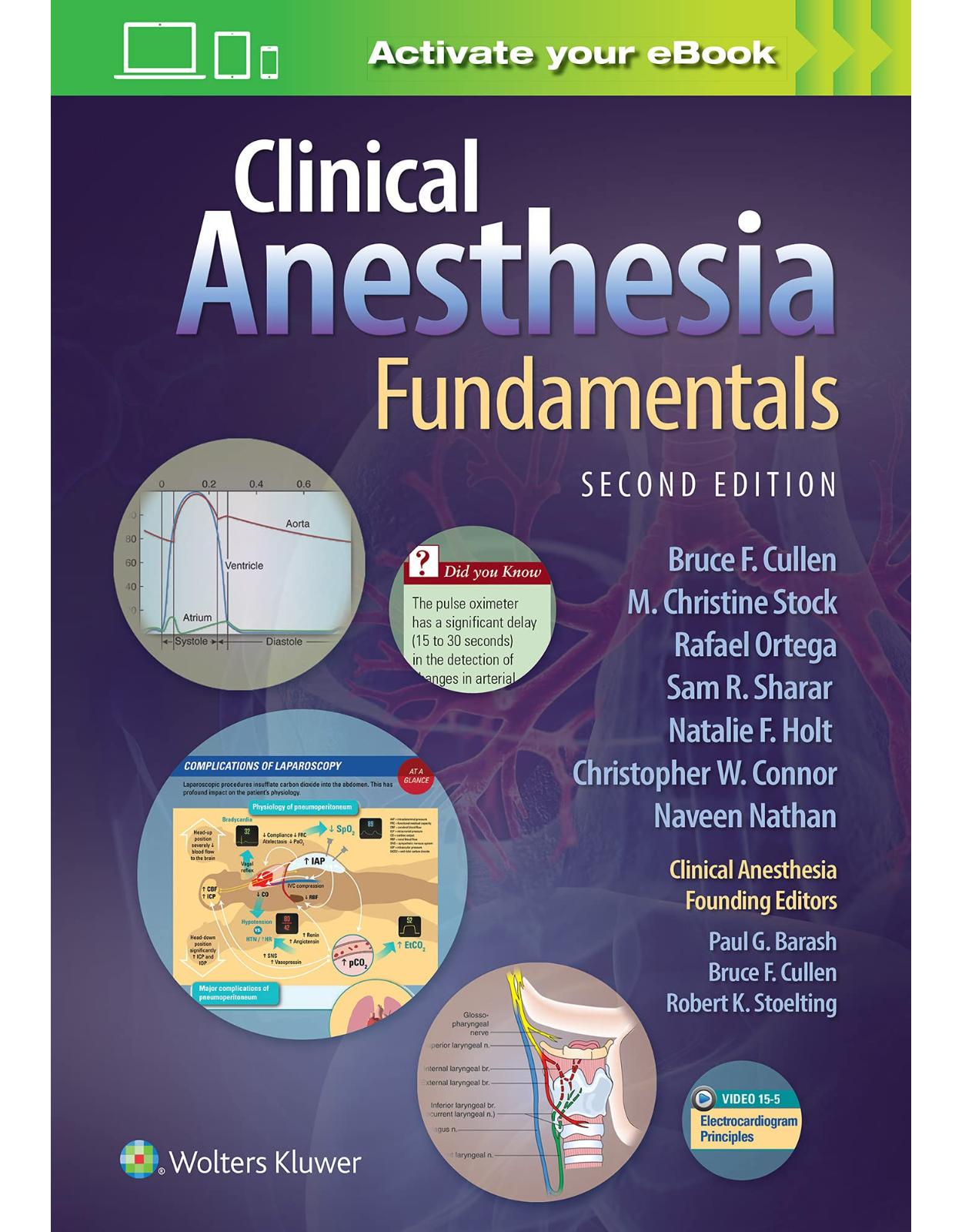
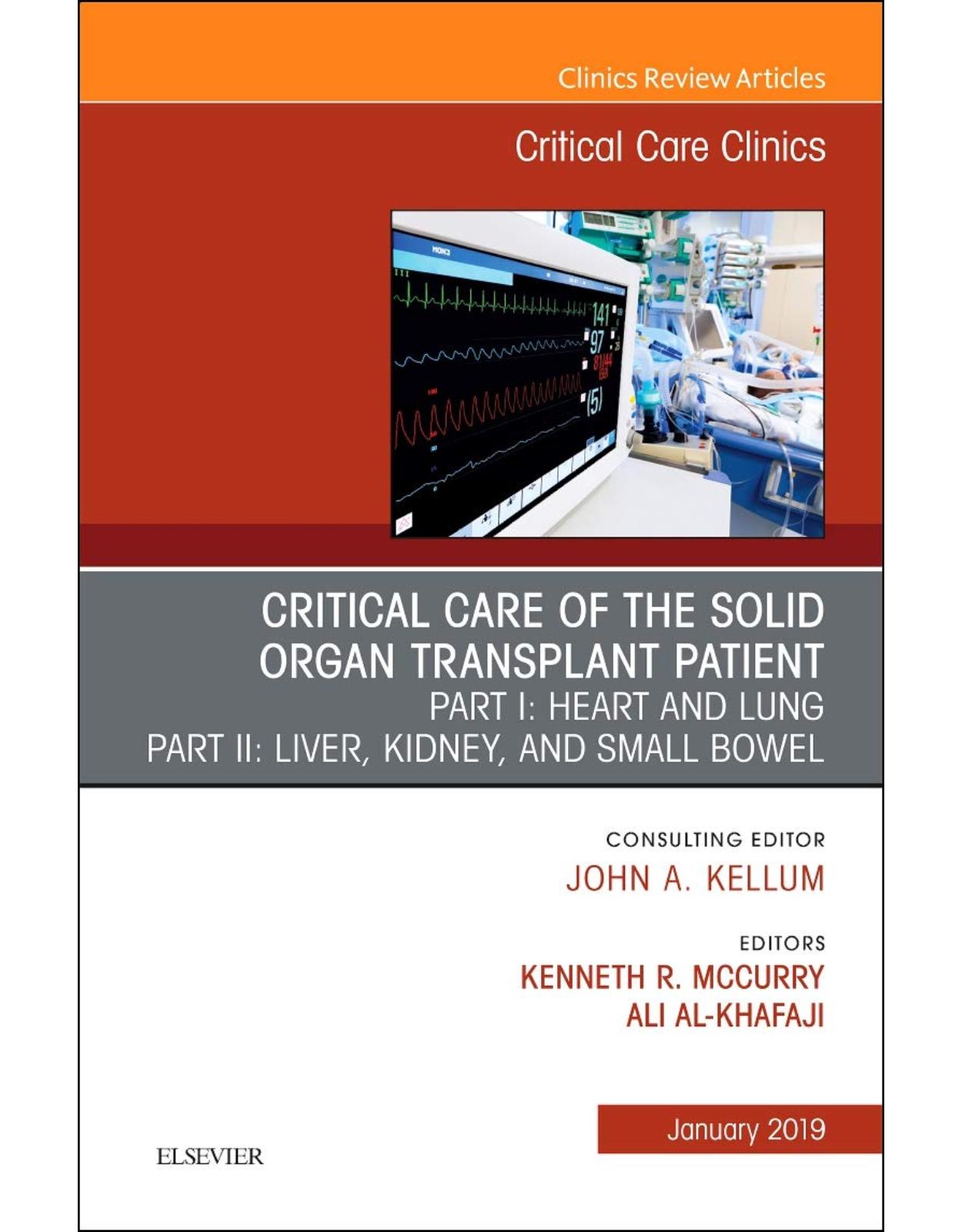
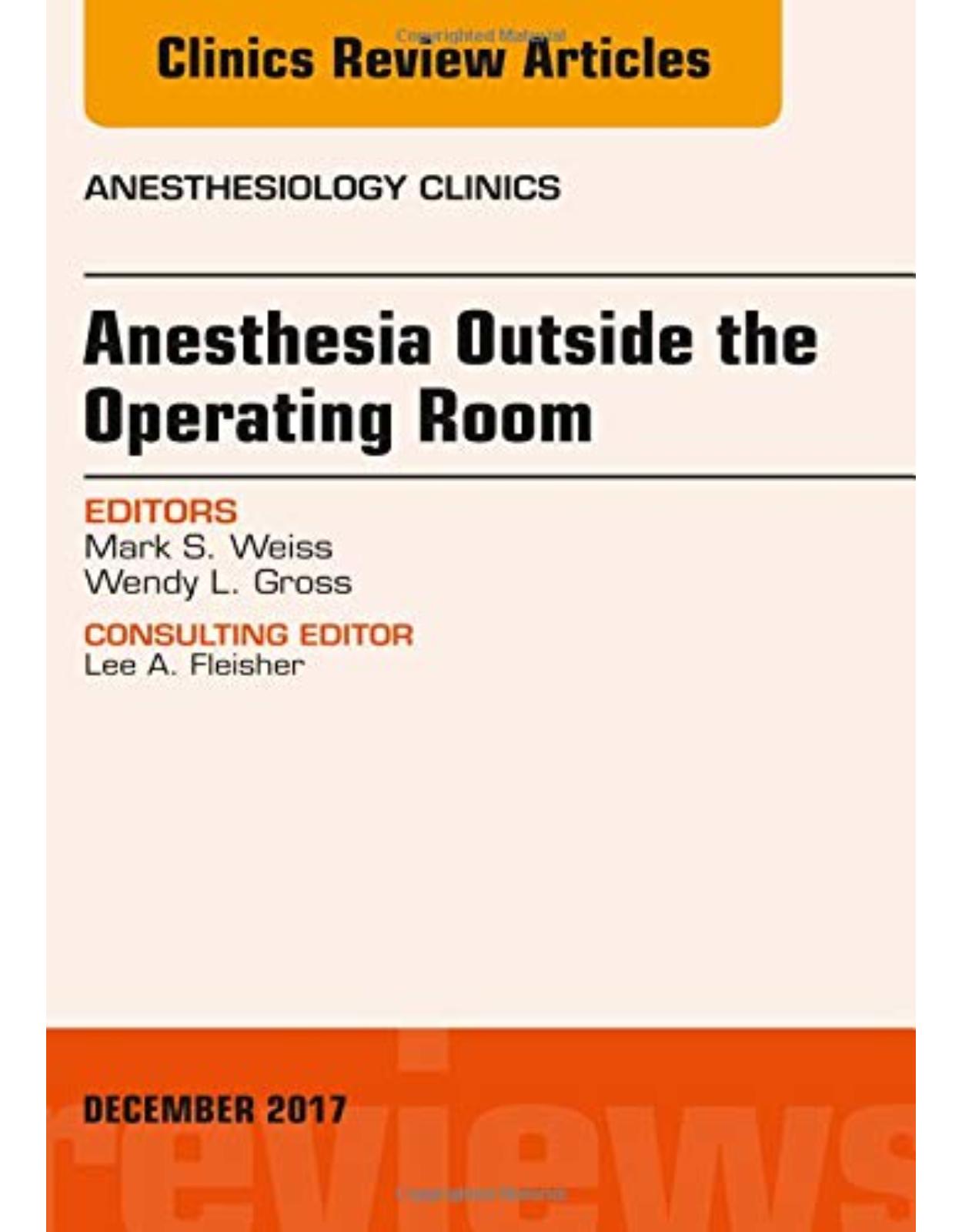
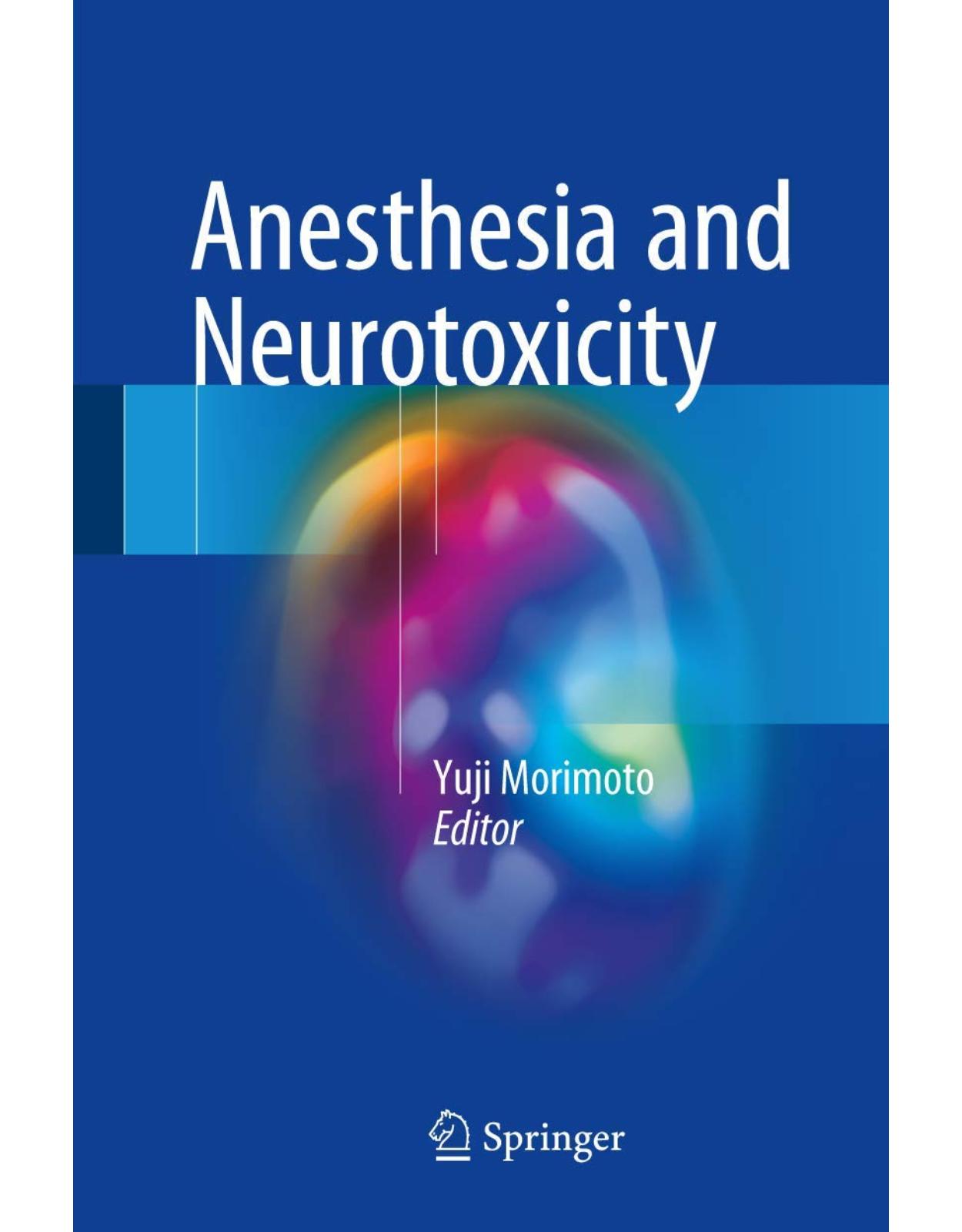
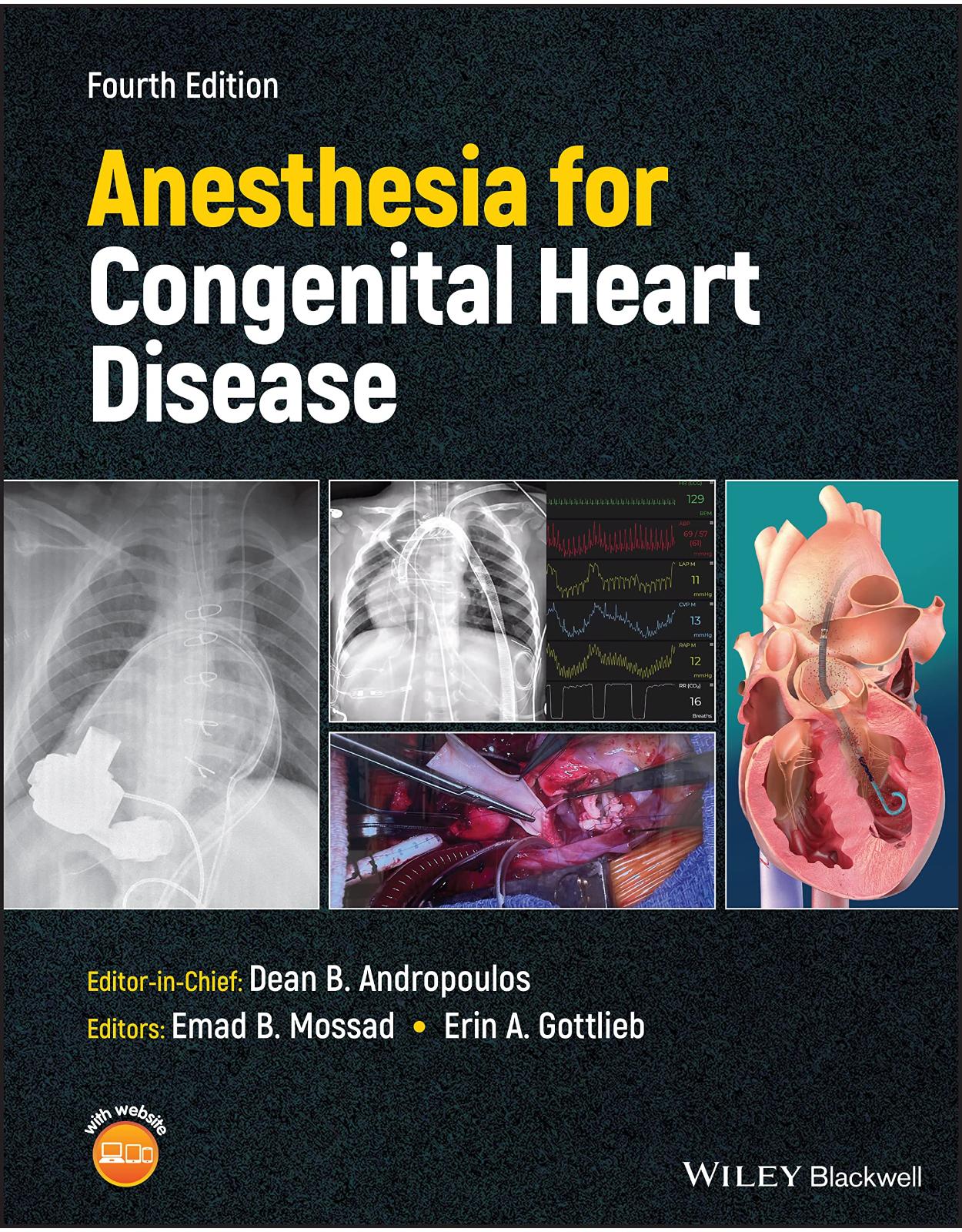
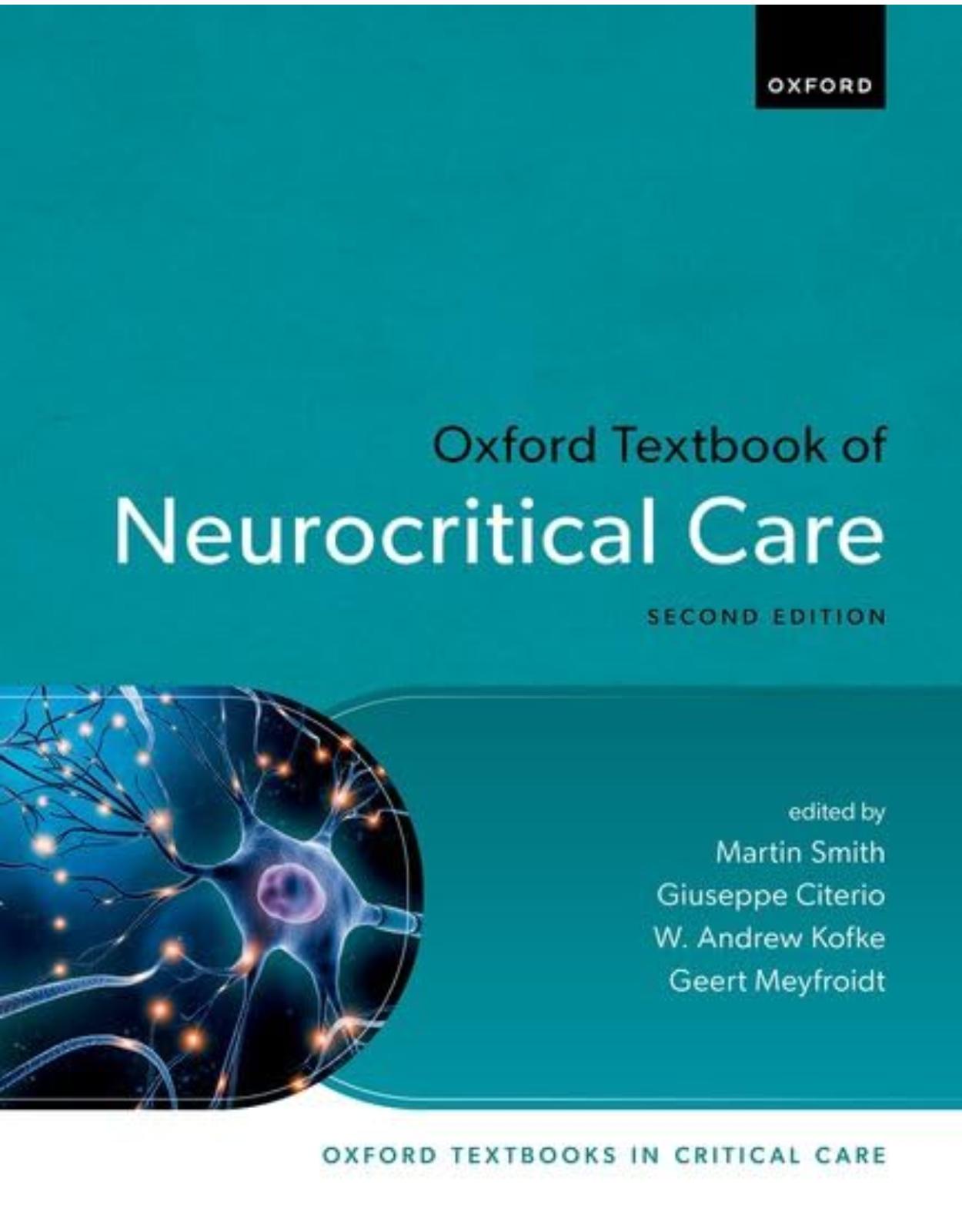
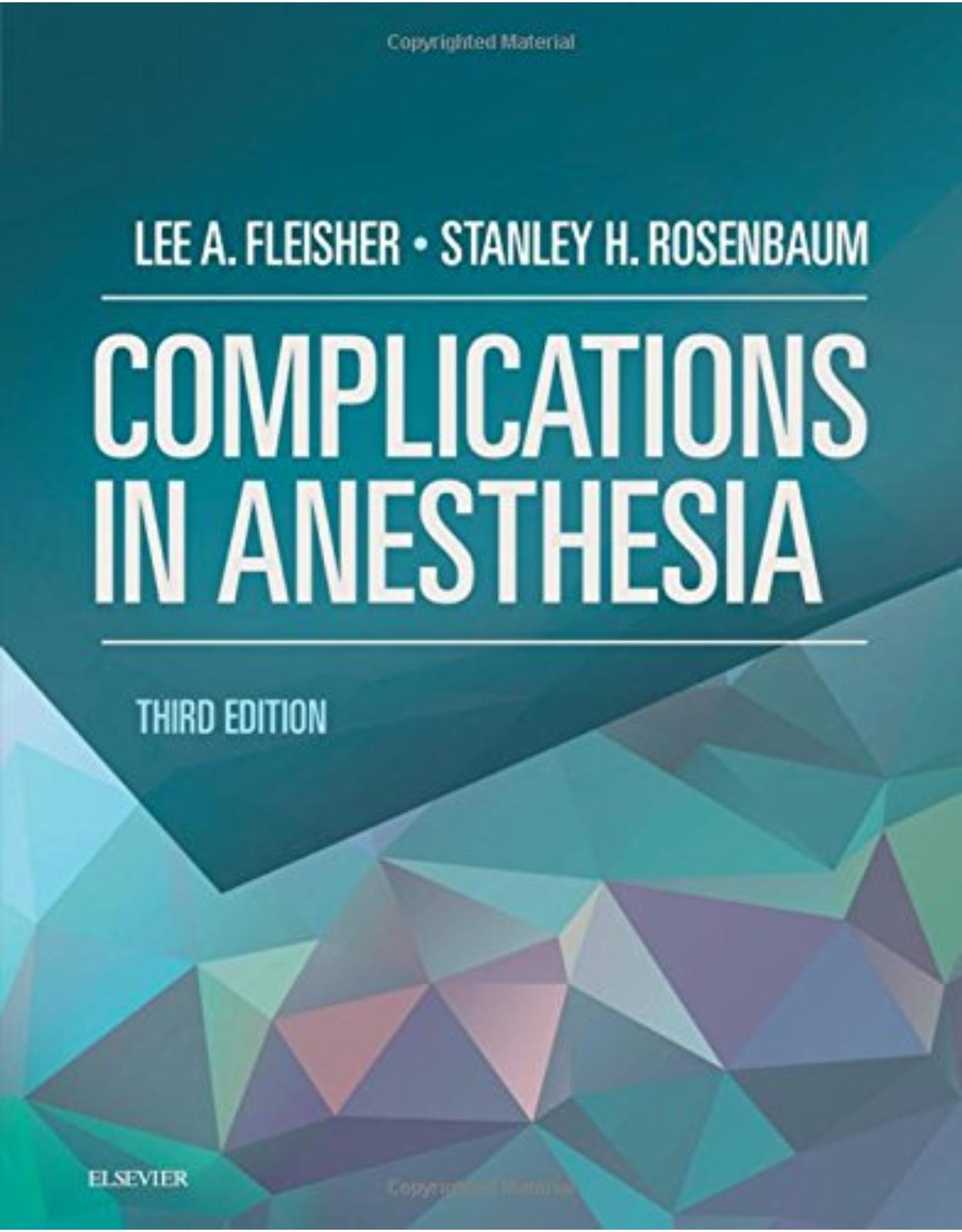
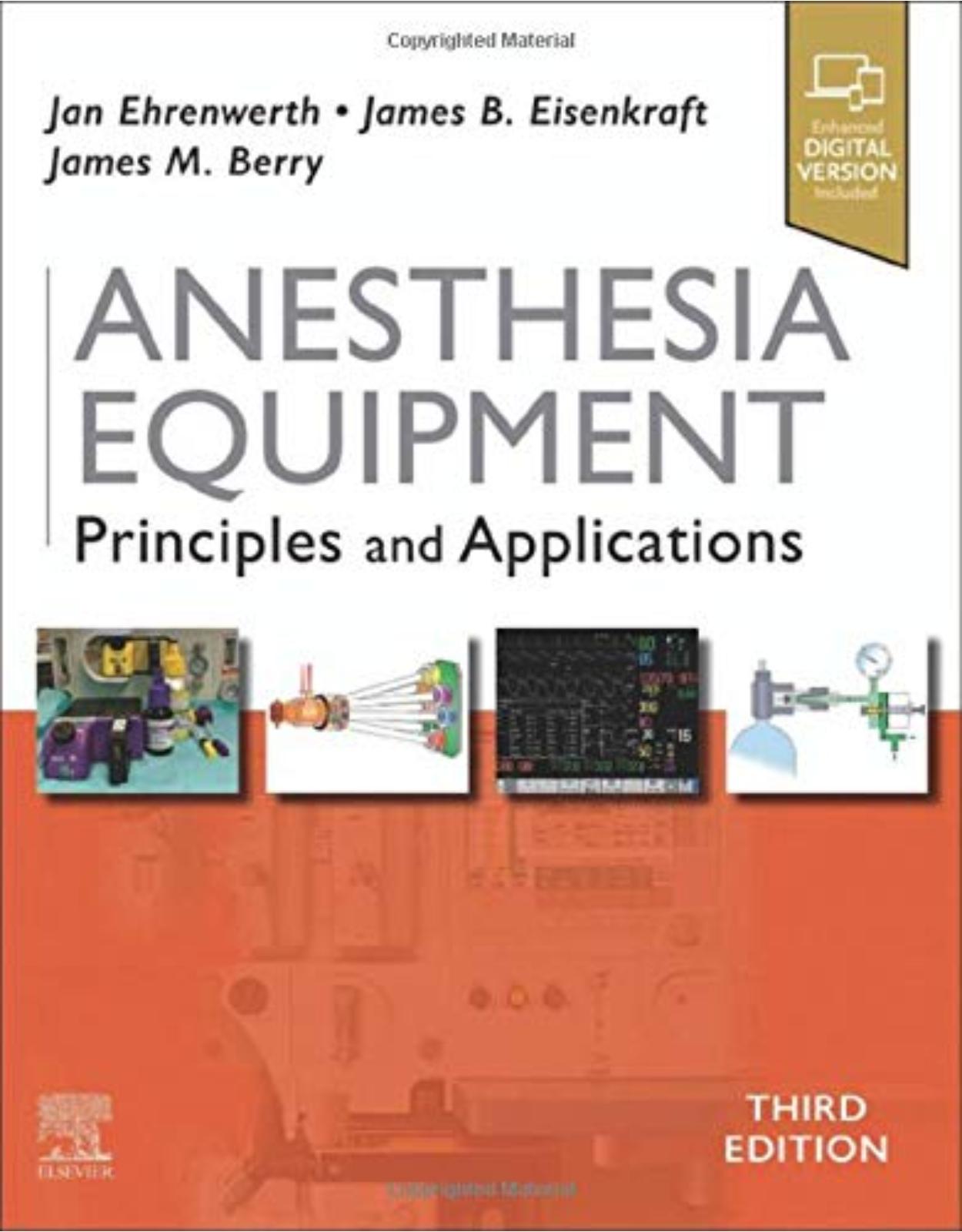
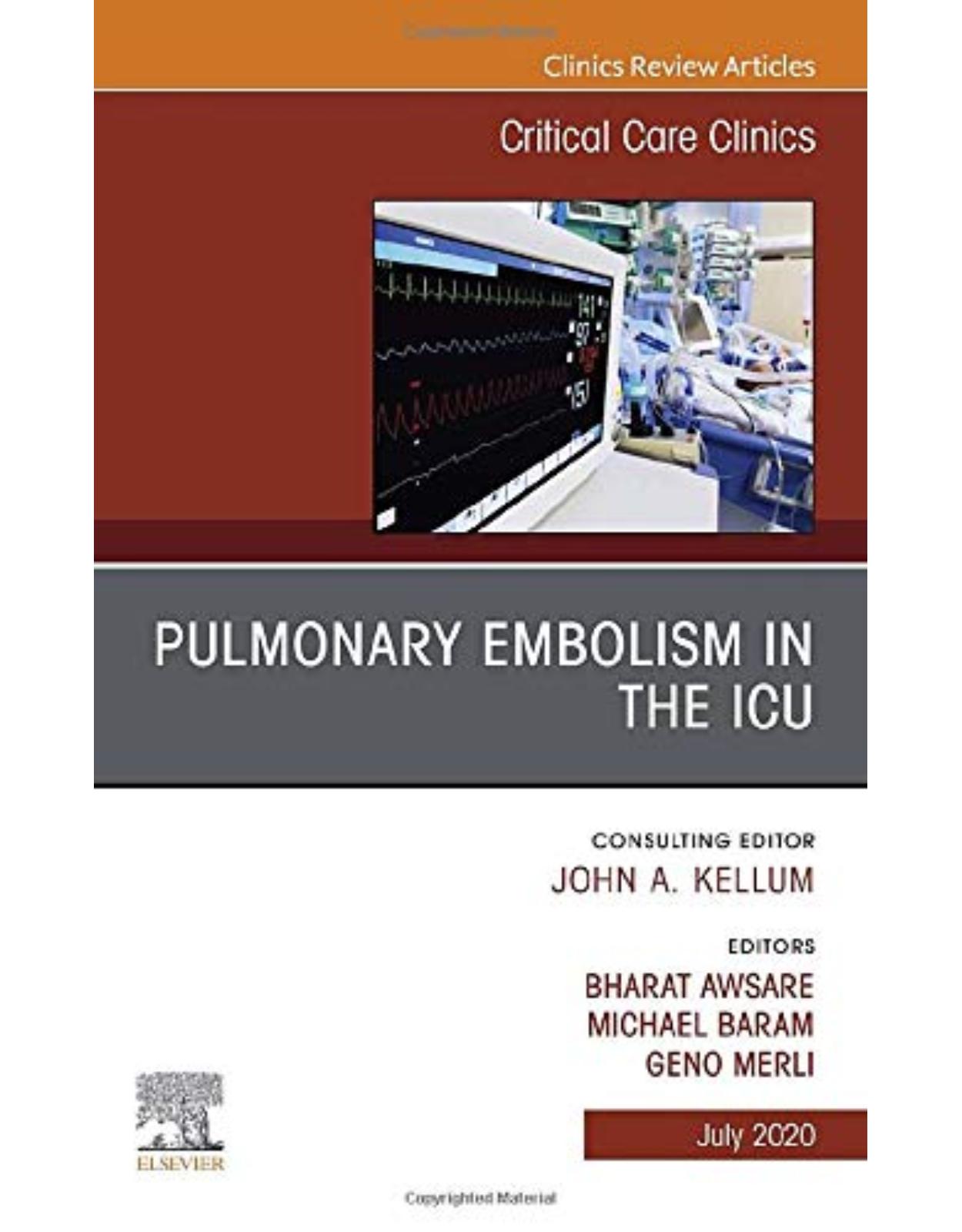
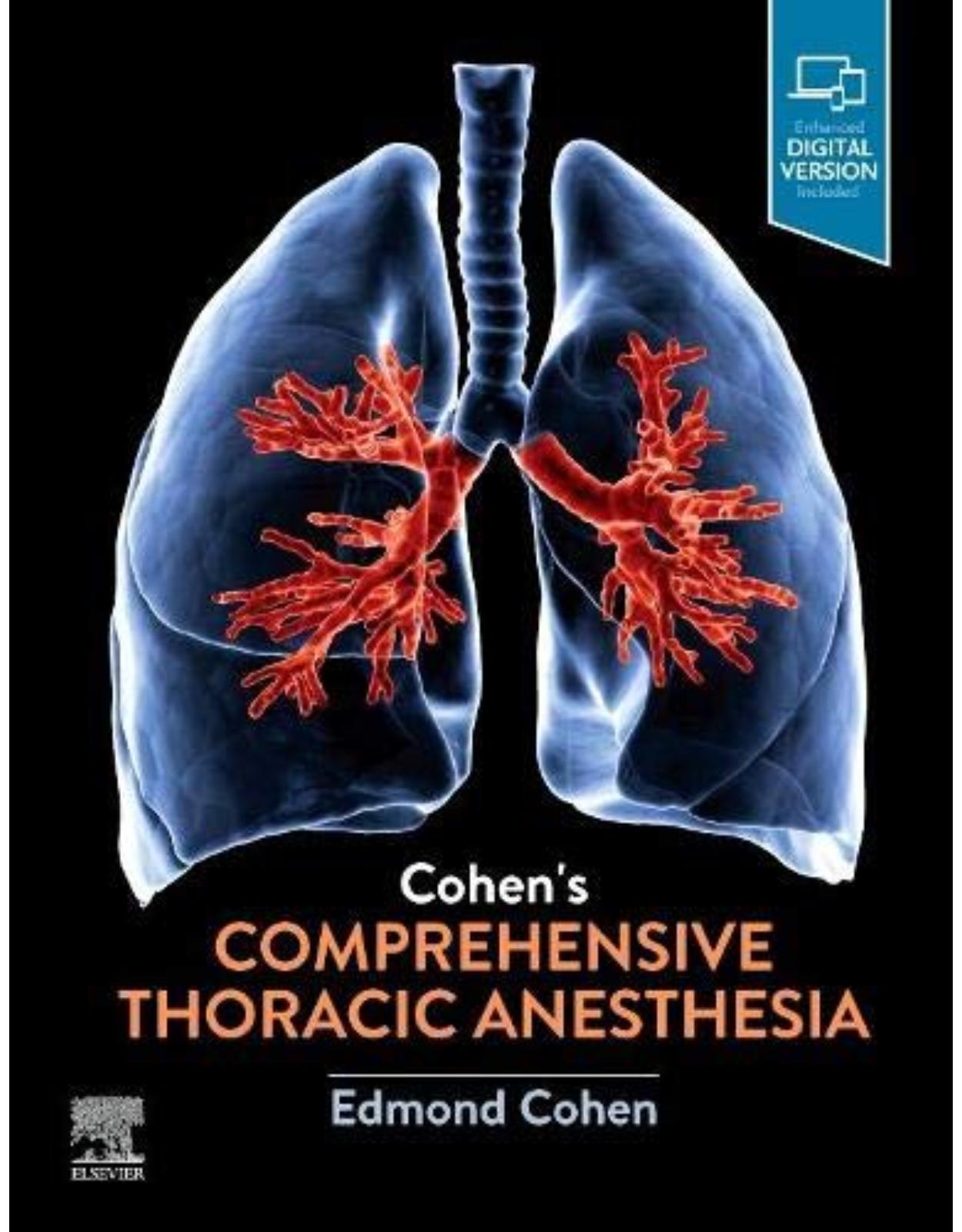
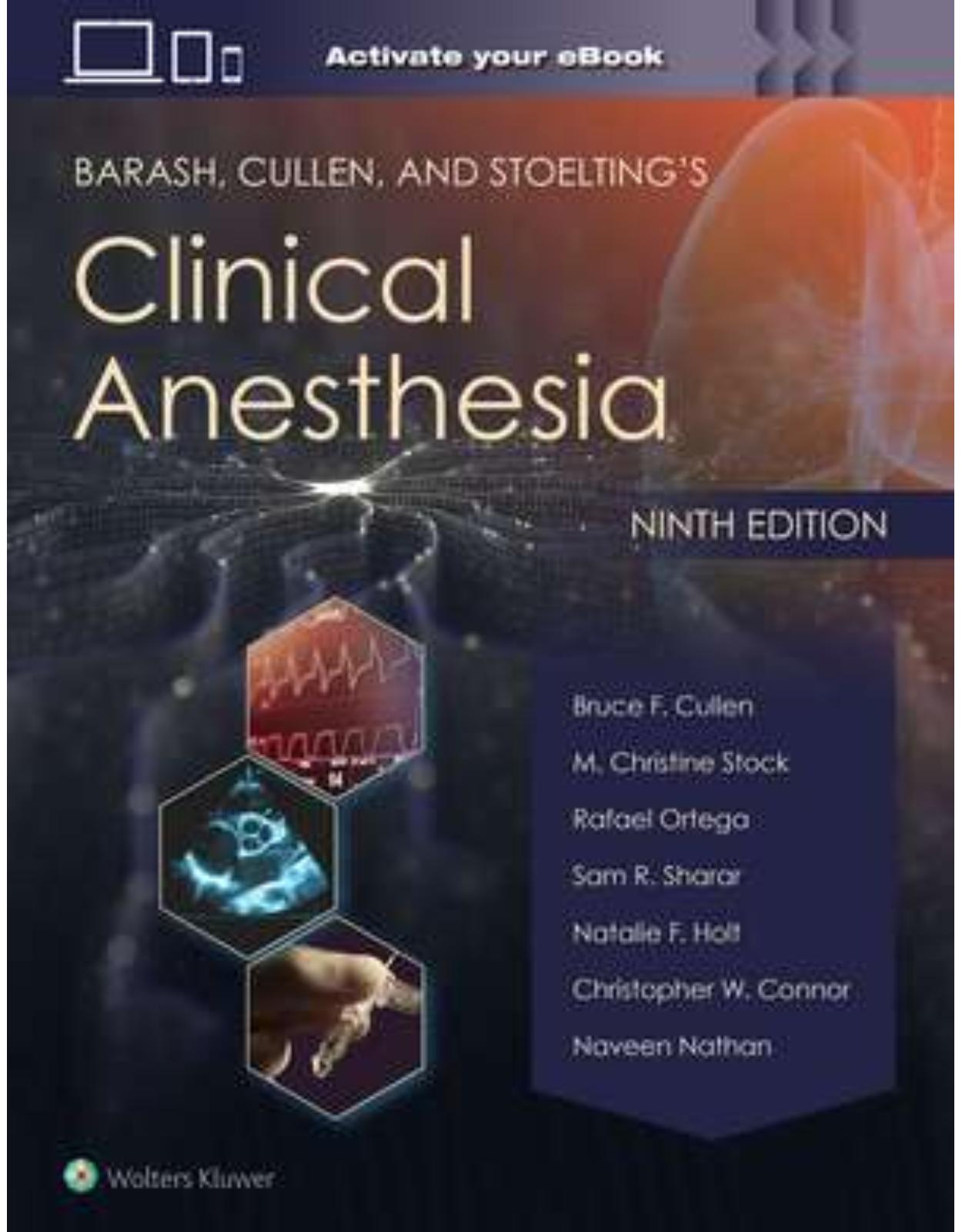
Clientii ebookshop.ro nu au adaugat inca opinii pentru acest produs. Fii primul care adauga o parere, folosind formularul de mai jos.